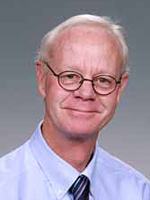In Memoriam: William F. Morgan
1952-2015
by Tony Brooks, PhD

William F. (Bill) Morgan, PhD, was an eminent scientist in the field of cell and molecular radiation biology. He died of a pulmonary embolism on Friday evening, 13 November 2015, in Richland, Washington. He was 62.
Bill was born and raised in Christchurch, New Zealand. He was the oldest of four children and was the only one of his family to get a college degree. His mother described him as her right hand and the helper of the family. As a boy he cultivated and developed many of his traits: a happy smile, a warm greeting, and a desire to help others, for which we all loved him.
A great accomplishment for Bill was to make someone laugh. His keen sense of humor, part of his early childhood, stayed with him throughout his life.
Bill started his scientific studies in botany, which helped him develop a great love of plants, and he got his master's and PhD in cytogenetics at the University of Canterbury. His move from New Zealand to Shelly Wolff's laboratory in San Francisco was important. It was here where he became a major player in modern radiation biology. His bench science skill provided him with an extensive background (more than 200 open-literature publications), making him extremely valuable in reviewing and providing scientific insights. He served on many important national and international committees (National Council on Radiation Protection and Measurements, 2002–2014; International Commission on Radiological Protection [ICRP]; and chair of ICRP Committee 1). He served on many other advisory boards and review committees that are too numerous to list.
Bill didn't get involved with the Health Physics Society (HPS) until he moved to the Pacific Northwest National Laboratory. He attended his first HPS meeting in Spokane, Washington, where he realized that this was the organization that has a major impact on setting standards. He threw himself into Society activities with great energy and was responsible for helping to organize and publish a symposium as a special issue in Health Physics, "Biological Consequences and Health Risks of Low-Level Exposure to Ionizing Radiation" (Health Physics 100:247–260). At the time of his death, he was working with me and Ludwig Feinendegen, PhD, to summarize the 2015 HPS symposium "Health Risks From Low Doses and Low Dose-Rates of Ionizing Radiation."
Bill is survived by his ex-wife, Rosemary Wong; two children, Michelle and Nicholas Morgan; his wife, Marianne Sowa; and daughter, Leyla Resat. They all shared his companionship and love of academics. Each of us felt that we were his best friend and can recount times that he helped us gain special recognition, assisted us in advancing our careers, and encouraged us to be our best. Bill’s science and his important contributions will live on, but he left an empty spot in the hearts and lives of all those who knew and loved him.




